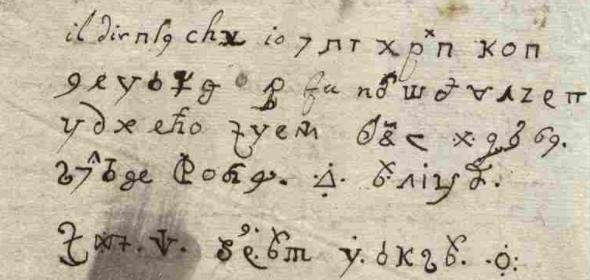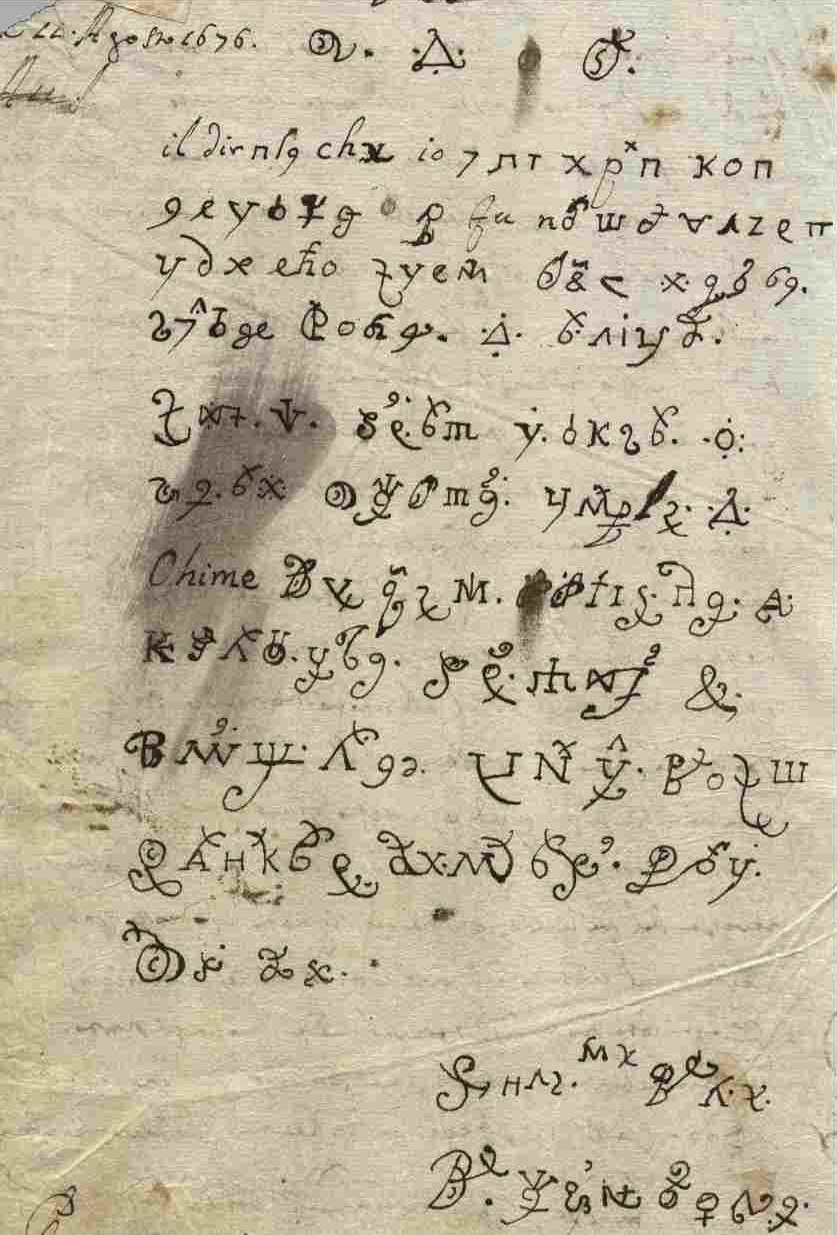A 17th-century Italian nun claimed that the Devil had dictated an encrypted letter to her. Scientists have now allegedly broken this cryptogram. Details are not known yet.
One of the best sources for unsolved historical cryptograms is Google. Using search terms like “encrypted letter” or “postcard in code”, I often find interesting topics to write about. Besides English and German, I use Russian, Italian, Portuguese and other languages for my searches – thanks to Google Translate this works quite well, though I have no command of these tongues.
A letter received from the devil
However, in spite of many Google searches and in spite of consulting the crypto history literature, it seems that I have missed a very interesting and well documented cryptogram – the Devil’s Letter.
The Devil’s Letter seems to have some popularity in Italy. There is even an Italian Wikipedia article about it. However, this encrypted note is not mentioned in the standard crypto history literature and it doesn’t show up on one of the numerous top ten unsolved ciphers lists that are available on YouTube.
The reason why I have now learned about the Devil’s Letter is that it has recently been broken (allegedly). This has been reported by several English and Italian news portals. Thank you very much to blog reader Eberhard Bauer for the hint.
According to legend, the Devil’s Letter was written in 1676 by an Italian nun named Sister Maria Crocifissa della Concezione from the convent of Palma di Montechiaro on Sicily. She claimed that the devil had dictated it to her in order to convince her to turn away from God.
To somebody interested in crypto history this letter looks like a text written in a secret alphabet. If so, the encryption can be regarded as a mono-alphabetic substitution cipher (MASC). Usually, cryptograms of this kind can be solved.
According to several press articles that have now been published, many codebreakers and historians tried to decipher the Devil’s Letter, but to no avail. If this is correct, I am a little surprised that this cryptogram is not mentioned in the crypto history literature I know. Maybe this is because so far mainly Italians have occupied themselves with it.
A solution – is it correct?
Earlier this week, researchers from the Ludum Science Center in Sicily announced that they had deciphered the Devil’s Letter. Of course, one needs to be careful with claims like these. After all, dozens of nonsensical solutions to all kinds of unsolved cryptograms have been published in recent years – just think of the alleged Voynich Manuscript solution I wrote about in my last post. However, this time I am a little more optimistic than usual, as the Devil’s Letter looks solvable.
To my regret, the Sicilian researchers have not released the complete solution at this time. Instead, they shared only a cleartext passage stating “God thinks he can free mortals. This system works for no one.” I hope, we will learn more soon.
The scientists that claim to have deciphered the Devil’s Letter are said to have used a special computer program they obtained on the Dark Web. This software is allegedly used by secret services. I have no idea, what it is about. One of the researchers is quoted by The Times as follows: “We primed the software with Ancient Greek, Arabic, the Runic alphabet and Latin to de-scramble some of the letter and show that it really is devilish.” This is not necessarily a statement of high scientific value.
I hope that the Sicilian researchers will publish a detailed account of their work soon. If a reader has more information about this cryptogram or can break it, please let me know.
Follow @KlausSchmeh
Further reading: A great event: the European Historical Ciphers Colloquium 2017
Linkedin: https://www.linkedin.com/groups/13501820
Facebook: https://www.facebook.com/groups/763282653806483/




Kommentare (15)